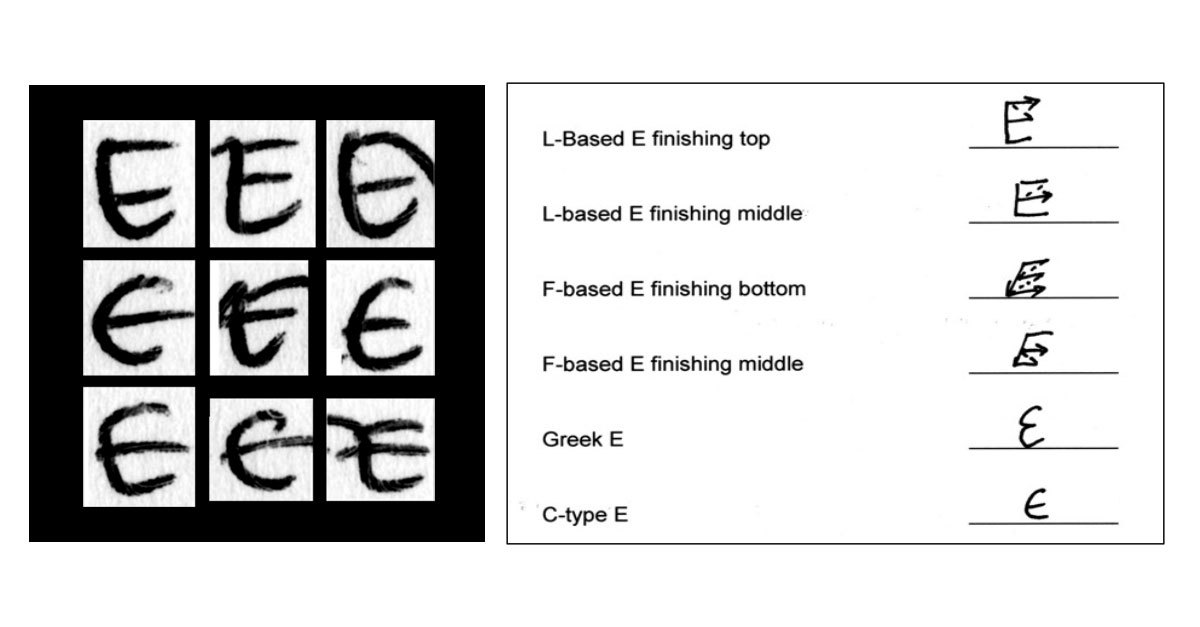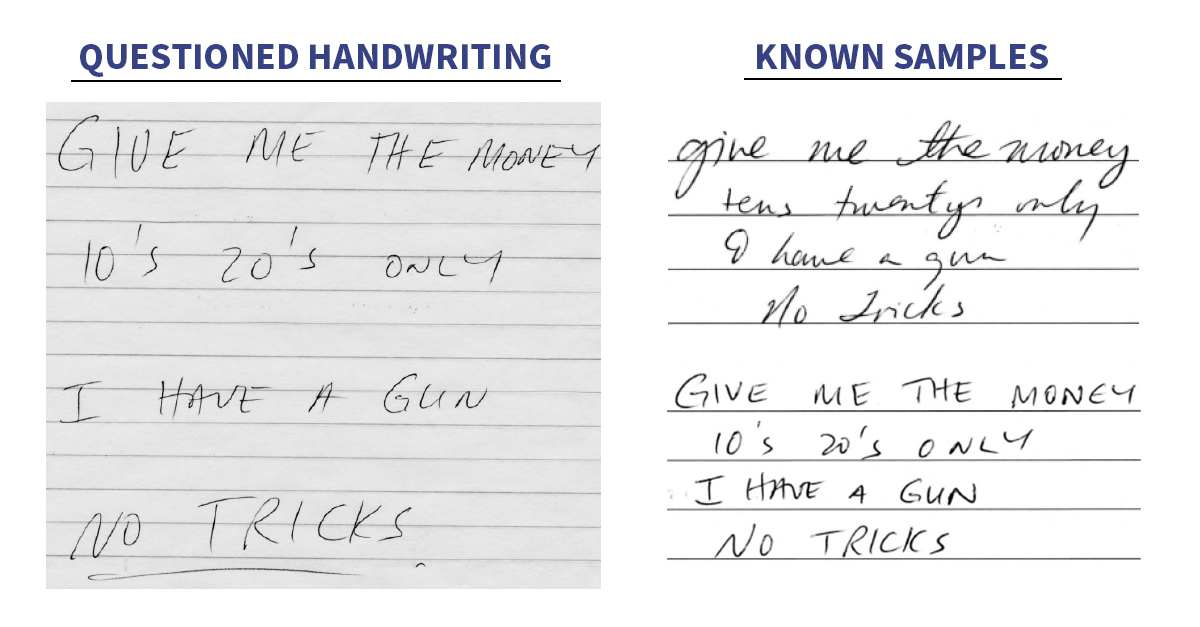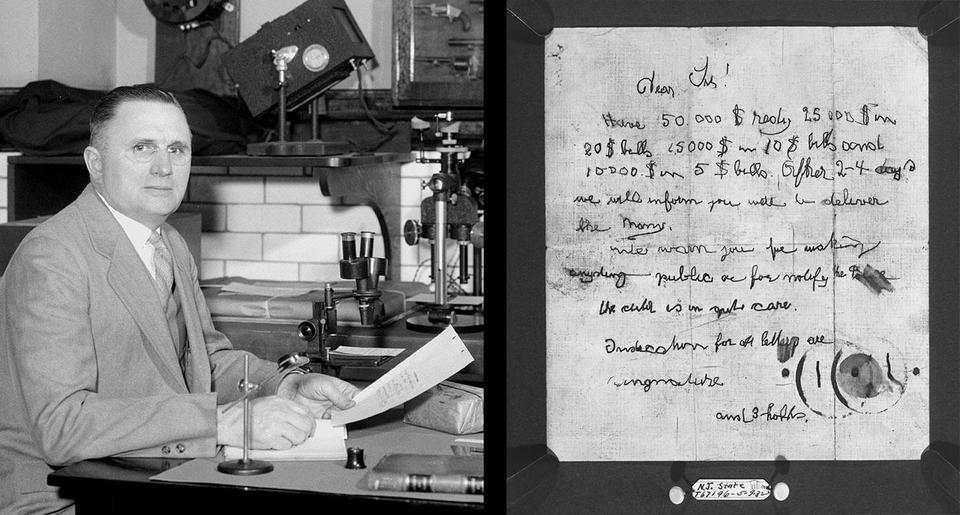People are writing more than ever with their keyboards and phones, but handwritten notes have become rare. Even signatures are going out of style. Most credit card purchases no longer require them, and if they do, you can usually just scratch one out with your fingernail. The age-old art of handwriting is in decline.
This marks a profound shift in how we communicate, but for one group of experts it also raises an existential question. Forensic handwriting examiners authenticate handwritten notes and signatures - or reveal them to be fakes - by analyzing distinctive features in our writing. As people write less by hand, will handwriting examination become irrelevant?
A recent report from the National Institute of Standards and Technology (NIST) suggests that the answer is no - if the field changes to keep up with the times. But the times are changing in more ways than one, and the decline in handwriting is only one of the challenges that the field will have to reckon with.
How the Experts Do It
Emily Will is a board-certified handwriting examiner in private practice in North Carolina. She has examined signatures on countless checks, wills, deeds and trusts. She has inspected medical records to assess whether a doctor's signature may have been added at a later date than indicated, perhaps after a lawsuit was filed. She has also examined longer forms of writing, such as threatening or harassing letters and suicide notes. If the apparent suicide victim didn't write the note, the police might have a homicide on their hands.
To assess whether a piece of handwriting was written by a particular person, examiners need something to compare it against, so they collect writing samples that are known to be from that person. The type of writing has to be the same, whether a signature, cursive writing, or hand printing. The known samples should be from roughly the same time period as the handwriting in question, because our handwriting evolves over time. And having multiple known samples to compare against is key, as that will allow the examiner to consider the variability in a person's writing style.
"You're not a robot, so every time you sign your name, it'll look different," Will said. "That's what makes handwriting examination so interesting."

NIST
Nonprofessionals might think that since most people know how to produce handwriting, pretty much anyone can examine it. They might assume that the expert compares such things as the size, slant and spacing of the letters and the connections between them. Indeed, examiners do that. But they also look beyond those features of writing for subtler signs of how the writing was made.
"Say you want to forge a signature," Will said. "You may be able to execute a good facsimile. But is the 'O' clockwise when it should be counterclockwise? Are there pen lifts where there shouldn't be? When you sign your name it's all muscle memory. But forging a signature requires deliberation. The pen slows down. It stops and starts." Those hesitations show up under a microscope as tiny puddles of ink.
"It's not so much how the signature looks, but how it was executed that's important," Will said.
Here's what Will carries in her go bag: a jeweler's loupe, a small optical microscope and a hand-held digital microscope. A flashlight. A paper micrometer, to measure the thickness of paper. A laptop and portable scanner. A camera that hooks up to her microscopes. "And frankly," she says, "I use my iPhone a lot these days."
Will's practice extends to the broader field of "questioned document examination," which involves scrutinizing an entire document for signs of fraud. At her lab, she has equipment for analyzing papers and inks and viewing them under different types of light. Some inks that look identical in daylight appear starkly different under infrared. She identifies erasures, alterations and obliterations and reveals indented writing - the impressions left on sheets of paper beneath the written note.
But most of Will's work involves handwriting and signatures, and there are a lot fewer of them these days. Check-cashing fraud is way down now that paychecks and Social Security checks are direct deposited. Medical malpractice lawsuits involve fewer signatures since electronic health records have become the norm. Even celebrities have noticed the change. In a 2014 opinion article in The Wall Street Journal, Taylor Swift wrote, "I haven't been asked for an autograph since the invention of the iPhone with a front-facing camera."
Enough handwriting still passes under Will's microscope to keep her in business. But, she says, "If I were a young person starting out today, I might consider cybersecurity."

NIST
A Roadmap for Staying Relevant
The field of forensic handwriting examination may have trouble attracting new blood. A report from NIST earlier this year found that the median age for handwriting examiners is 60, compared with 42 to 44 for people in similar scientific and technical occupations. That report, Forensic Handwriting Examination and Human Factors: Improving the Practice Through a Systems Approach, was published by NIST, but was written by 23 outside experts, including Will.
To increase recruitment, the report recommends replacing the unpaid apprenticeships that have been the traditional route of entry into the field with grants and fellowships. The report also recommends cross-training with other forensic disciplines that involve pattern matching, such as fingerprint examination.
The "human factors" in the report's title refers to a field of study that seeks to understand the factors that affect human capability and job performance. In forensic science, these include training, communication, technology and management policies, to name just a few.
Melissa Taylor, the NIST human factors expert who led the group of authors, said that the report provides the forensic handwriting community with a road map for staying relevant. But the threat of irrelevance doesn't come only from the decline in handwriting. Part of the challenge, she says, arises from the field of forensic science itself.
"There is a big push toward greater reliability and more rigorous research in forensic science," said Taylor, whose research is aimed at reducing errors and improving job performance in handwriting examination and other forensic disciplines, including fingerprints and DNA. "To stay relevant, the field of handwriting examination will have to change with the times."
Among other changes, the report recommends more research to estimate error rates for the field. This will allow juries and others to consider the potential for error when weighing an examiner's testimony. The report also recommends that experts avoid testifying in absolute terms or saying that an individual has written something to the exclusion of all other writers. Instead, experts should report their findings in terms of relative probabilities and degrees of certainty.
These recommendations are consistent with findings in a landmark 2009 report from the National Academy of Sciences. Called Strengthening Forensic Science in the United States: A Path Forward, that report said that "there may be a scientific basis for handwriting comparison," but that there has been only limited research on its reliability.

NBS/NIST; source: NARA
In the 1930s, a physicist at NIST, then known as the National Bureau of Standards, became a leading handwriting expert. His name was Wilmer Souder, and the most famous case he worked on was 1932 the kidnapping of Charles Lindberg Jr., the infant son of the famous aviator. Despite the notoriety of this case, Souder himself kept an extremely low profile - so much so that when he retired, a profile in Reader's Digest referred to him as Detective X.






